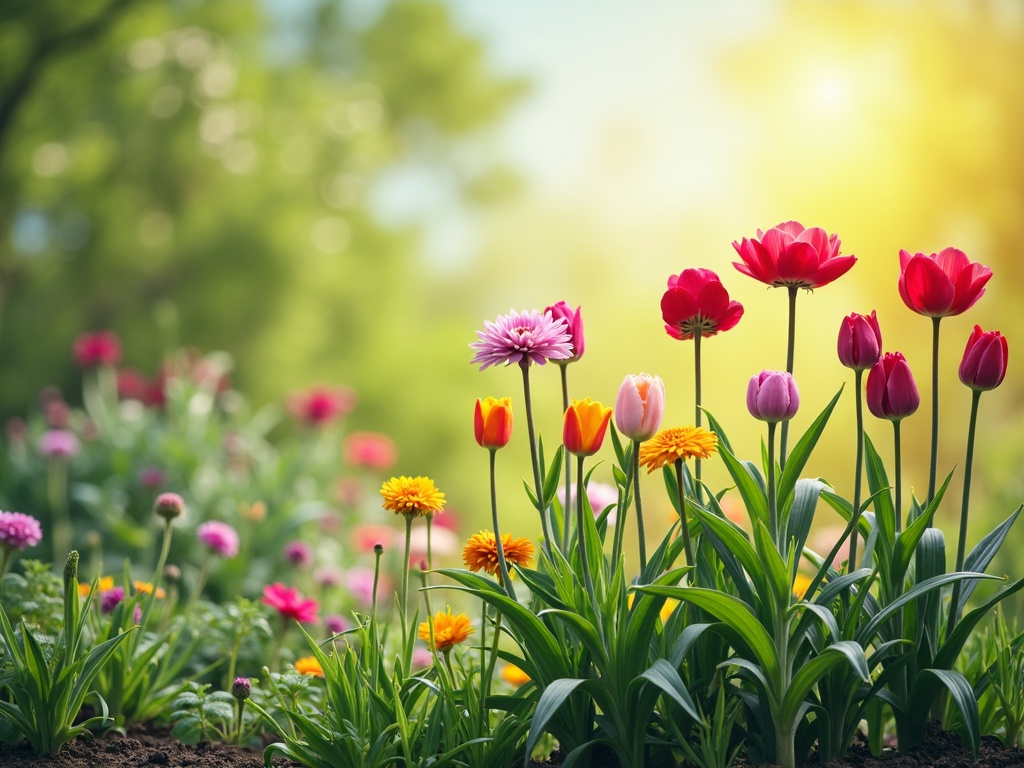What to Plant in a Beginner Garden: A Green Thumb Guide
Imagine stepping into your backyard and plucking a sun-ripened tomato, still warm from the sun. Or snipping fresh herbs to infuse tonight’s dinner with unparalleled flavor. This isn’t just a dream; it’s the attainable reality of a home garden! Starting a garden might seem daunting, but with the right choices, it can be a rewarding and delicious experience. This guide is your roadmap to creating a thriving beginner garden, even if you’ve never touched a trowel before.
Planning Your Beginner Garden: Setting the Stage for Success
Before you rush to the garden center, take some time to consider the fundamentals. A little planning goes a long way in ensuring your garden flourishes.
Assess Your Space and Sunlight
The first step is understanding what you’re working with. How much space do you have? Is it a sprawling backyard, a sunny balcony, or just a windowsill? Different plants have different space requirements.
More importantly, how much sunlight does your chosen area receive? Most vegetables and herbs crave at least six hours of direct sunlight per day. Observe your yard throughout the day to track the sun’s path and identify the sunniest spots. If you have limited sunlight, don’t despair! There are shade-tolerant options we’ll discuss later.
Consider Your Climate and Growing Season
Your geographic location plays a crucial role in determining what you can grow and when. Find out your USDA plant hardiness zone. This zone indicates the average minimum winter temperature in your area, helping you select plants that can survive your winters if you’re planting perennials (plants that come back year after year).
Also, be aware of your growing season – the period between the last frost in spring and the first frost in fall. This will dictate when you can plant certain crops. Local nurseries and extension services are excellent resources for this information.
Choose the Right Soil
Healthy soil is the foundation of a healthy garden. Most garden plants thrive in well-drained soil that’s rich in organic matter. If your soil is heavy clay or sandy, you’ll need to amend it.
**Clay soil:Add compost, aged manure, or other organic matter to improve drainage and aeration.
**Sandy soil:Add compost or peat moss to help retain moisture and nutrients.
A soil test can tell you the pH level and nutrient content of your soil, allowing you to make targeted amendments. You can purchase a soil test kit online or through your local extension office.
Easy Vegetables for Beginner Gardeners
Now for the fun part: choosing what to grow! These vegetables are known for being relatively easy to cultivate, even for gardening novices:
Lettuce and Salad Greens
Lettuce is quick to grow and comes in a variety of textures and flavors. Loose-leaf varieties are particularly beginner-friendly, as you can harvest individual leaves as needed, extending your harvest period. Arugula, spinach, and other salad greens are also excellent choices.
**Tip:Plant lettuce in partial shade during the heat of summer to prevent bolting (going to seed).
Radishes
Radishes are the speed demons of the vegetable garden, often ready to harvest in just a few weeks. They’re easy to grow from seed and tolerate a wide range of conditions. Plant them in succession, sowing a few seeds every week or two, for a continuous supply.
Bush Beans
Bush beans are compact, productive, and don’t require staking. They produce abundant crops of beans in a relatively short amount of time. Look for varieties labeled bush beans rather than pole beans, which require a trellis or other support.
Zucchini
Zucchini is notoriously prolific, sometimes to the point of overwhelming gardeners. Plant just a couple of plants, and you’ll likely have more zucchini than you know what to do with! They’re easy to grow from seed or transplants and thrive in warm weather.
**Warning:Zucchini plants are susceptible to squash vine borers, so keep an eye out for signs of infestation.
Cherry Tomatoes
Cherry tomatoes are smaller and sweeter than larger tomato varieties, and they tend to be more forgiving for beginner gardeners. They grow well in containers and are less prone to cracking than larger tomatoes. Provide them with plenty of sunlight and support with a stake or cage.
Must-Have Herbs for the Beginner Garden
Herbs are a fantastic addition to any garden, adding flavor and fragrance to your meals and attracting beneficial insects. These herbs are particularly easy to grow:
Mint
Mint is incredibly easy to grow, almost to a fault. It spreads rapidly, so it’s best to grow it in a container to prevent it from taking over your garden. It thrives in partial shade and tolerates a wide range of conditions.
Basil
Basil is a culinary staple and a must-have for any herb garden. It prefers warm weather and plenty of sunlight. Pinch off the flower buds to encourage bushier growth and a longer harvest.
Chives
Chives are a hardy perennial that adds a mild onion flavor to dishes. They’re easy to grow from seed or transplants and thrive in full sun to partial shade. Cut them back regularly to encourage new growth.
Parsley
Parsley is a versatile herb that can be used fresh or dried. It’s easy to grow from seed, but it can take a few weeks to germinate. Soak the seeds in water overnight before planting to speed up germination.
Thyme
Thyme is a drought-tolerant herb that adds a savory flavor to dishes. It prefers well-drained soil and full sun. There are many different varieties of thyme, each with its unique flavor and aroma.
Flowers to Enhance Your Beginner Garden
Flowers not only add beauty to your garden but also attract pollinators, which are essential for vegetable and fruit production. These flowers are relatively easy to grow from seed or transplants:
Marigolds
Marigolds are cheerful and low-maintenance flowers that come in a variety of colors. They attract beneficial insects and repel nematodes, which can damage plant roots.
Zinnias
Zinnias are easy to grow from seed and produce abundant blooms in a wide range of colors. They attract butterflies and hummingbirds.
Sunflowers
Sunflowers are iconic and easy to grow, adding a touch of whimsy to any garden. Choose dwarf varieties for smaller spaces. They attract birds and provide seeds for snacking.
Nasturtiums
Nasturtiums are both beautiful and edible, with peppery-flavored leaves and flowers. They attract pollinators and deter pests.
Essential Tools and Supplies for a Beginner Gardener
To get your garden started, you’ll need a few basic tools and supplies:
**Gardening Gloves:Protect your hands from dirt, thorns, and potential irritants.
**Trowel:For digging small holes and transplanting seedlings.
**Hand Rake:For smoothing soil and removing debris.
**Watering Can or Hose:For providing water to your plants.
**Gardening Fork:For turning soil and mixing in amendments.
**Compost or Aged Manure:For enriching the soil.
**Seeds or Seedlings:Choose high-quality seeds or healthy transplants from a reputable source.
Tips for Beginner Gardening Success
**Start Small:Don’t try to do too much at once. Begin with a small garden bed or a few containers.
**Water Regularly:Water deeply and consistently, especially during dry spells.
**Weed Regularly:Weeds compete with your plants for water and nutrients. Pull them out as soon as you see them.
**Fertilize Sparingly:Over-fertilizing can be harmful to plants. Use a balanced fertilizer according to the package directions.
**Observe Your Plants:Pay attention to your plants’ needs and adjust your care accordingly.
**Don’t Be Afraid to Ask for Help:Local nurseries and extension services are excellent resources for gardening advice.
**Learn from Your Mistakes:Gardening is a learning process. Don’t get discouraged if things don’t go perfectly the first time.
**Enjoy the Process:Gardening should be a fun and rewarding experience. Take time to appreciate the beauty and bounty of your garden.
With a little planning, the right plant choices, and consistent care, you can create a thriving beginner garden that provides you with fresh vegetables, herbs, and flowers all season long. So, get your hands dirty, embrace the learning process, and enjoy the fruits (and vegetables!) of your labor. Happy gardening!

